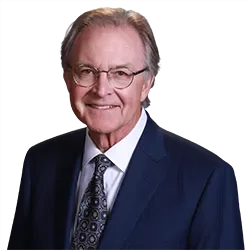ASAP
FAA Finalizes HazMat Training Requirements for Air Carriers
The Federal Aviation Administration (FAA) recently published a final rule announcing that certain air carriers and commercial operators must provide hazardous material training to employees who perform "transport-related functions," such as handling packages and loading aircraft. 70 Fed. Reg. 58796 (Oct. 7, 2005). The new rules also require that certain repair stations develop and maintain documentation that workers handling hazmat materials for transportation have been trained. The FAA action finalized a proposal published in May 2003 for the purpose of updating rules applicable to hazmat transportation operations that have changed substantially since the regulations first were adopted more than 25 years ago.
The new rule incorporates existing agency guidance documents (such as its "Advisory Circulars") into regulations that can be enforced uniformly. It applies to U.S. air carriers and commercial operators certificated on or before November 7, 2005, to operate under part 121 or part 135 of the agency's regulations, and generally mandates that such entities bring their hazardous materials training programs into full compliance with the new requirements. The agency announcement initially establishes a Special Federal Aviation Regulation (SFAR) that will expire 15 months after its November 7, 2005, effective date. During this period, covered operators may continue to comply with current requirements or elect to comply with the new rule. In any event, certificate holders are required to be in full compliance with the new training requirements at the end of the 15-month transition period, February 7, 2007. The new rules are available at http://dmses.dot.gov/docimages/p82/348458.pdf
Covered By Job Function
All air carrier employees who perform transport-related functions are covered by the training rule, which covers employees based on their job function, not job title. Some requirements are common to certificate holders that are classified as "will-carry" (i.e., certificate holders electing to transport hazardous materials) and those classified as "will-not-carry" (i.e., certificate holders who elect not to transport hazardous materials). The final rule requires part 121 and part 135 operators to indicate in their manuals whether they are "will-carry" or "will-not-carry" operators. Other requirements will vary, depending upon the individual carrier's status; however, the "will-carry" or "will-not-carry" status is relevant only to the content of the required training, not to the requirement to train workers.
The agency's regulations that had prescribed hazardous materials training for air carriers and commercial operators under 14 C.F.R. parts 121 or 135 were first adopted more than 25 years ago. The final rule prescribes the requirements applicable to each part 121 or part 135 certificate holder for training each person performing or supervising any of the following functions involving any item for transport on board an aircraft (i.e., "transport-related functions"): acceptance, rejection, handling, storage incidental to transport, packaging of company material, or loading. (The final rule removed "unloading" from the list of transport-related functions, because the package is being removed from the aircraft and would not pose a danger to the aircraft.) Additionally, the FAA removed the term "carriage" from the list of transport-related functions, because the term was considered confusing and the terms covered by carriage are already listed as covered functions.
Training Requirements
Manuals for both will-carry and will-not-carry certificate holders are now required to contain procedures for rejecting packages that are not properly prepared and offered for shipment under the regulations or that appear to contain hazardous materials.
The FAA wants employees to be better trained so that they are more likely to stop either packages improperly offered for shipment as hazardous materials, or packages that contain undeclared hazardous material shipments which indicate the presence of hazardous materials to a trained individual (i.e., discoverable hazardous materials). For example, the FAA wants employees trained to recognize that terms such as "chemicals," "lighters," or "solvents" on packages may indicate the possible presence of an undeclared hazardous material.
Prior to the final rule, the FAA enforced training requirements for carriers that were not hazmat-certified only through general oversight of training plans and advisory circular guidance. The final rule codifies the FAA's ability to directly enforce hazardous materials training for non-certified carriers.
The FAA has provided a new Appendix O in the regulations comprised of two charts showing the training requirements for various categories of persons defined by job function or responsibility. The two tables describe the training requirements for "will-carry" and "will-not-carry" certificate holders.
For the "will-carry" certificate holders, employees must, at a minimum and dependent upon job function, be familiar with the following aspects of transport of hazardous materials by air: (1) general philosophy; (2) limitations; (3) general requirements for shippers; (4) classification; (5) list of hazardous materials; (6) general packing requirements; (7) labeling and marking; (8) hazardous materials transport document and other relevant documentation; (9) acceptance procedures; (10) recognition of undeclared hazardous materials; (11) storage and loading procedures; (12) pilots' notification; (13) provisions for passengers and crew; and (14) emergency procedures. The only "will-carry" certificate holder job function required to receive training in all of the listed categories are operators and ground-handling agent's staff accepting hazardous materials.
For the "will-not-carry" certificate holders, employees must, at a minimum and dependent upon job function, be familiar with the following aspects of transport of hazardous materials by air: (1) general philosophy; (2) limitations; (3) general requirements for shippers; (4) classification; (5) list of hazardous materials; (6) general packing requirements; (7) labeling and marking; (8) hazardous materials transport document and other relevant documentation; (9) recognition of undeclared hazardous materials; (10) provisions for passengers and crew; and (11) emergency procedures. The only "will-not-carry" certificate holder job function required to receive training in all of the listed categories are operators and ground-handling agent's staff accepting cargo other than hazardous materials.
Responding to the comments received to the proposed rule, the FAA stresses that the training requirements are flexible. The FAA deems that it is the part 121 and part 135 operators' responsibility to ensure that the type, duration, and delivery method of training are adequate and appropriate for each worker. The approved hazardous materials training program, according to the FAA, may be provided by company training programs, computer-based programs, self-guided compact disk training programs, outside training firms or consultants, or any other type of organization offering training that meets the objective training requirements. Additionally, all persons affected by the rule are required to receive hazardous materials training every 24 months.
The final rule requires that, regardless of the teaching method used, the operator must provide a method to respond to students' questions prior to certifying the completion of the training. E-mail is an acceptable means of communicating and responding to questions.
The training requirements provide that part 121 and part 135 operators must obtain approval of the hazardous materials training program. The current practice of submitting an outline sufficient to provide an overview of the training program will suffice for purposes of approval, unless it is necessary to see the full hazardous materials training program to understand the curriculum.
Certificate holders are required to maintain training records of all initial and recurrent hazardous materials training. Records may be maintained electronically.
Repair Stations
Under the rule, a repair station that maintains and repairs air carriers is required to establish and comply with hazardous materials training for employees. If the training requirements are not complied with, the FAA will not issue the repair station's certificate or rating. If a repair station handles hazardous materials without placing those materials into transportation, the requirements of the rule do not apply.
A repair station is also required to notify repair station employees, its contractors, or subcontractors of the will-carry or will-not-carry status of the certificate holders for which the repair station does work. Under the rule, a repair station must inform the certificate holders that it has received the required notification.
Relation to OSHA Rules
Both the FAA and the Occupational Safety and Health Administration (OSHA). OSHA address questions of hazardous materials training, in different ways. The FAA's rules are focused on training provided by covered entities to their workers regarding recognition of hazardous materials potentially offered for transport, and rejection of such movements. OSHA's rules apply broadly in workplaces where there is potential for employee exposure to chemical substances, and where exposure or clean-up operations may take place.
A key legal issue involving the application of both agencies' rules involves their respective authority and the purpose of their respective requirements. The FAA has broad statutory authority to regulate aviation safety. Specifically, the FAA has authority under 49 U.S.C. section 44701(a)(5) to prescribe "regulations and minimum standards for other practices, methods, and procedures the Federal Aviation Administrator finds necessary for safety in air commerce and national security." Here, the FAA is regulating aviation safety by specifying those employees of part 121 and part 135 air carriers who should receive hazardous materials training in order to ensure that air transport operations proceed safely.
Under the Occupational Safety and Health Act ("OSH Act"), OSHA promulgates standards and regulations relating to workplace exposure to safety and health hazards. That agency has promulgated requirements relating to chemical hazard training for employees exposed or potentially exposed to such hazards in the course of their work, as well as in clean-up operations involving hazardous substances. As such, there may be some degree of overlap between the two agencies' rules; under the OSH Act, OSHA may be preempted from regulating the training of those employees directly affected by the FAA's final rule. Section 4(b)(1) of the OSH Act limits the application of that statute's authority to "working conditions of employees with respect to which other federal agencies ... exercise statutory authority to prescribe or enforce standards or regulations affecting occupational safety and health." In addition, OSHA and the FAA entered into a memorandum of understanding (MOU) relating to their respective roles in regulating workplace safety and health in the aviation industry in 2000. It noted that for several decades, the FAA has asserted its complete and exclusive responsibility for the regulation of the safety of civil aircraft in operation. At the same time, the 2000 MOU stressed the importance that the FAA and OSHA placed on working together to ensure that one agency did not unnecessarily block the application of the other agency's regulations.
The recent regulatory announcement appears carefully designed to focus on responsibilities of carriers, operators and repair facilities that relate to the safe transport of hazardous materials on aircraft in operation. As such, it appears to have acted within its authority, although its promulgating training requirements may, conceivably, overlap with more general requirements issued by OSHA. At the same time, employers generally subject to the FAA's jurisdiction need to consider if their employees engaged in activities beyond those addressed in the FAA rule are potentially exposed to hazardous chemicals and/or hazardous waste in other situations, in which case such employees may remain subject to some of OSHA's rules relating to chemical hazard information and training. In any event, the new FAA rules may provide a good opportunity for certificated air carriers (and repair stations) to examine the scope of all employees' current or potential contact with hazardous substances in the course of their various work activities, and ensure appropriate training programs are in place.
Peter A. Susser is a shareholder in Littler Mendelson's Washington, D.C. office; Steven R. McCown is a shareholder in Littler's Dallas, TX office. If you would like further information, please contact your Littler attorney at 1.888.LITTLER, info@Littler.com, Mr. Susser at psusser@littler.com or Mr. McCown at smccown@littler.com.

